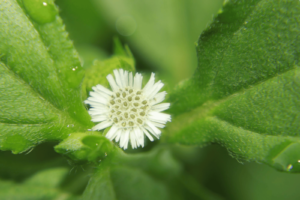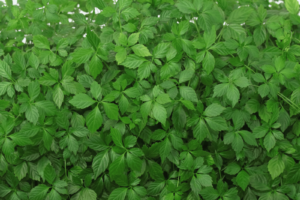What are Tablets?
Tablets are the most prevalent and widely used type of oral medication in the pharmaceutical industry. Tablets provide a quick, affordable, reliable way of giving patients their medication. Tablets are strong, compressed pills made of one or more ingredients that have been powdered. They are created by compressing the mixture of excipients and active pharmaceutical ingredients (APIs), resulting in a hard, smooth-coated pill that dissolves in the gastrointestinal tract.
There are many different sizes and shapes of tablets, such as round, oblong (caplets), and a disc-like ones. Some tablets contain a unique coating that stops them from dissolving in the stomach, allowing the medication to only be absorbed in the small intestine. Chewable pills and orally dissolving tablets (ODTs) are further options for people who have difficulty swallowing.

How tablets are processed?
The production of tablets is a precise, monitored procedure that guarantees that each tablet has the proper dosage of medication and satisfies stringent quality requirements. The phases involved in tablet manufacture are as follows:
- Granulation: The first step is to combine the active pharmaceutical ingredients (APIs) and excipients into a granulated mixture. Granulation is necessary to create a homogeneous distribution of the active ingredient and excipients, which enhances the compressive properties of the tablet. Before we move to the next step, lets understand what excipient is.
What is Excipients in tablet processing?
Excipients are agents or chemicals other than Active Pharmaceutical Ingredients (APIs) used in the preparation of a pharmaceutical medicine for long-term stabilisation and is a key component of the drug development process. These inert chemicals are essential for maintaining the potency, efficacy, and integrity of pharmaceuticals. To guarantee the success of therapeutic formulations, the choice of suitable excipients thereof, is crucial. Excipients come in a variety of forms, each with a particular function in the production of pharmaceuticals. Among the more typical kinds of excipients are:
- Bulking agents: Bulking agents give the tablet bulk so that potent substances can be dosed precisely. They make it easier to compress tablets and help you get the right tablet size. Examples include inorganic materials like silicates as well as sugar molecules like lactose, glucose, and sorbitol.
- Binding agents: Binders are necessary for binding the tablet components together and giving the tablet shape and mechanical durability. They guarantee the integrity of tablets both during production and use. Examples of common binders include starches, sugars, and derivatives of cellulose, as well as synthetic or natural polymers.
- Disintegrants: Disintegrants help the tablet disperse throughout the gastrointestinal system, allowing the release of the active component and increasing the surface area for disintegration. They enable the tablet to disintegrate into smaller pieces. Examples of common disintegrants include starch, cellulose-derived substances, alginates, and crospovidone.
- Anti – Caking agents (Glidants): Glidants improve powder flow during tablet production by lowering resistance and particle adhesion. In order to avoid powder adhesion, they are used as anti-caking agents. Common glidants include silica compounds and colloidal anhydrous silicon.
- Lubricants: Lubricants function similarly to glidants, although they may delay disintegration and breakdown. Certain compounds, such as talc and starch, have both glidant and lubricating characteristics. Stearic acid and its compounds, such as magnesium stearate, are used often as lubricants.
- Humectants: Humectants aid in the retention of moisture in the tablet, reducing tablet breakdown and retaining its stability. They guarantee that the tablet remains unaltered and functioning throughout its shelf life. In the manufacture of tablets, glycerin serves as a humectant.
- Colouring agents: Colourants make tablets more appealing to patients and also help with product identification. They can also improve the stability of medicines that are light-sensitive. These compounds mostly comprise of synthetic dyes and natural colours, such as chemicals that are food-based naturally occurring pigments.
- Coating agents: Tablet coatings have several functions, including preserving the tablet from external factors (air, sunlight, and humidity), enhancing mechanical strength, disguising taste, and odour, assisting in swallowing, and altering active ingredient release. Natural or manufactured polymers like cellulose acetate phthalate, which is utilised for enteric coatings that delay the release of the active component, act as typical coating agents.
To formulate secure, efficient, and excellent tablet formulations, pharmaceutical scientists thoroughly assess and choose excipients based on their functions, compatibility with APIs, and safety standards.
- Blending: To ensure that the medicine is uniformly distributed throughout the batch, the powdered mixture is then thoroughly mixed. However, proper blending is critical as it determines the strength and efficiency of the pills.
- Compression: The combined granules are put into a tablet press, where they are compressed into the required tablet shape under extreme pressure. The tablet press has configurations that specify the dimensions and form of the tablet.
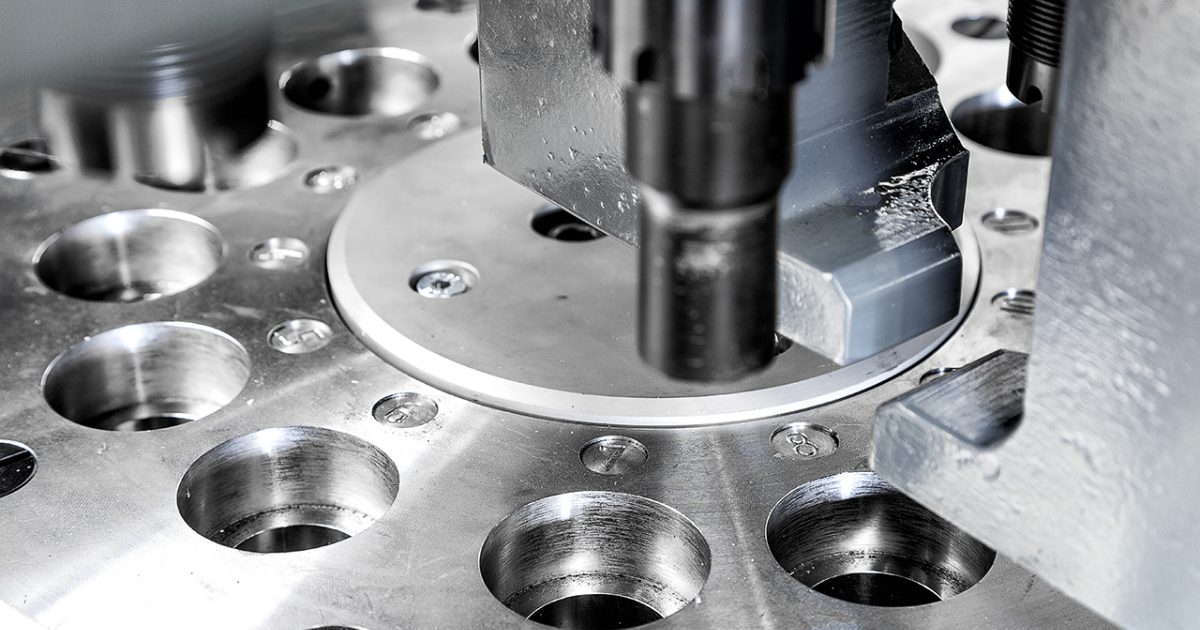
- Coating: Some tablets go through a coating procedure after compression. Coating has several uses, including protecting the tablet from outside influences, enhancing appearance, and minimising flavour or odour. The three most popular tablet coating techniques are enteric coating, film coating, and sugar coating.
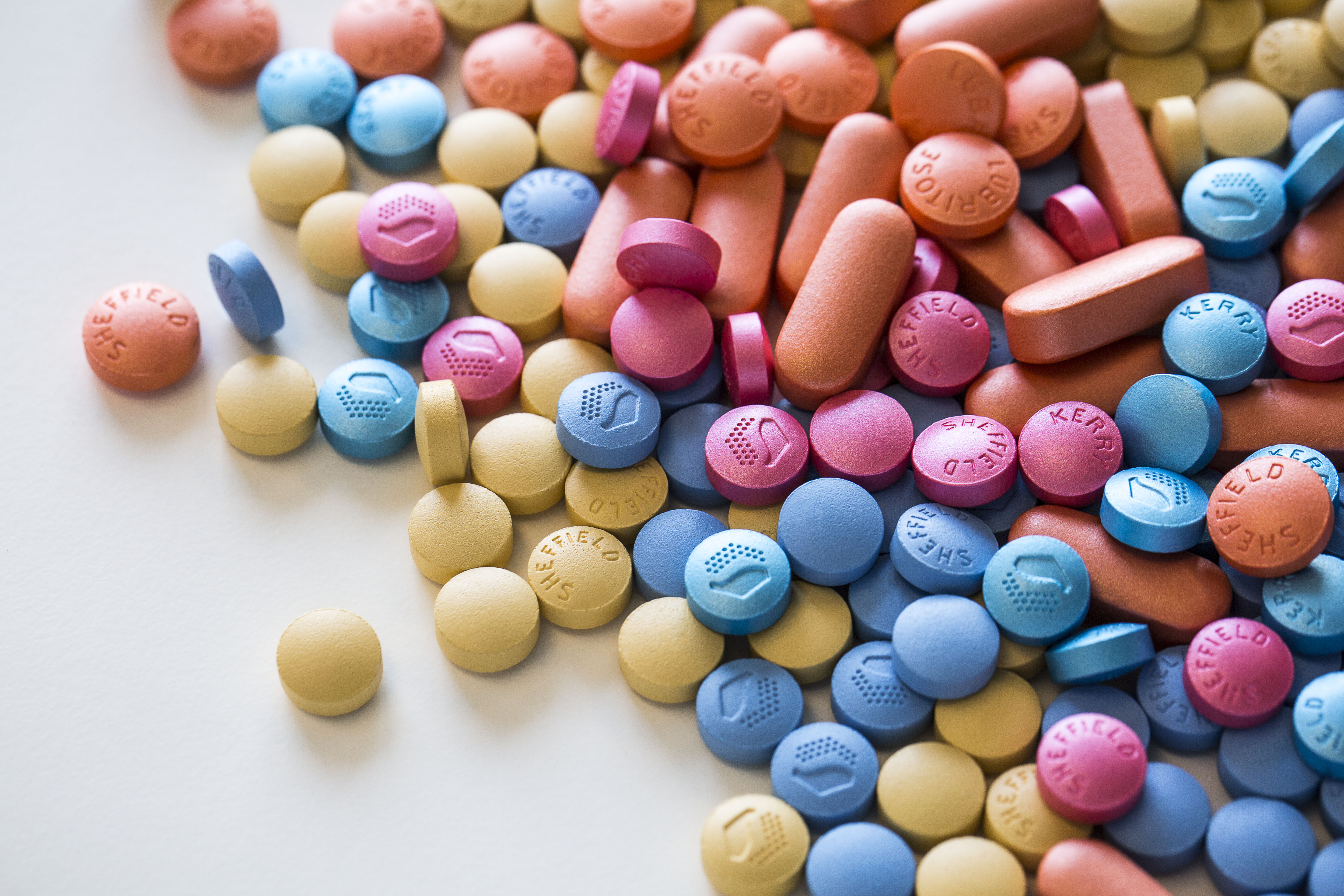
Types of tablet coating
- Enteric coating: Enteric coating is a unique kind of coating used on oral tablets to prevent the pill from dissolving in the stomach’s acid. Instead, the coating doesn’t go away until the tablet enters the highly alkaline atmosphere of the small intestine. This postponed release makes sure that the active pharmaceutical ingredient (API) stays away from stomach acid, which may cause the stomach lining to irritate. Medications that are acidic or have a bad taste or odour benefit greatly from enteric coating. Some non-steroidal anti-inflammatory medicines (NSAIDs), certain antibiotics, and therapies for diseases like acid reflux are typical examples of pharmaceuticals having enteric coating.
- Film coating: Film-coated tablets are pharmaceutical formulations that have a thin film of coating added to the tablet. The film coating serves a number of functions, including improving the look of the tablet, shielding the tablet from moisture and light, easing ingestion by providing a smooth surface, and covering up any unfavourable tastes or odours of the medication. Furthermore, film-coated tablets can be created to deliver a controlled release of the drug either right once or over a prolonged period of time. This dosage form is a versatile and popular choice in the pharmaceutical sector since it is frequently used for a number of treatments, including painkillers, anti-inflammatory agents, and many more.
- Sugar coating: The practise of coating tablets known as “sugar coating” layers the tablet with sucrose or other sugar derivatives to provide a smooth, enticing, and distinctive appearance. The lengthy sugar coating procedure includes several processes, such as sealing, sub coating, smoothing, and polishing. The main goal of sugar coating is to make pills more appealing to patients by enhancing their flavour and appearance. The coating can reduce the unpleasant or bitter taste of some tablets, improving patient cooperation. Furthermore, sugar coating can protect the tablet from external factors such as moisture and air.
- Quality control: To guarantee that the tablets fulfil the essential requirements, strict quality control procedures are used throughout the production process. At various phases of manufacture, samples are obtained to evaluate consistency, volume, toughness, and disintegration.
- Packaging: The tablets will qualify for packaging once they have passed quality control. Tablet packaging comes in a variety of popular forms, including:
- Blister packs: Blister packs are a common and easy-to-use tablet packaging. Each tablet is enclosed inside a blister cavity made of pre-formed plastic to protect it from air, moisture, and cross contamination. Blister packets also offer precise dosage, simple medicine labelling, and a tamper-evident cover.
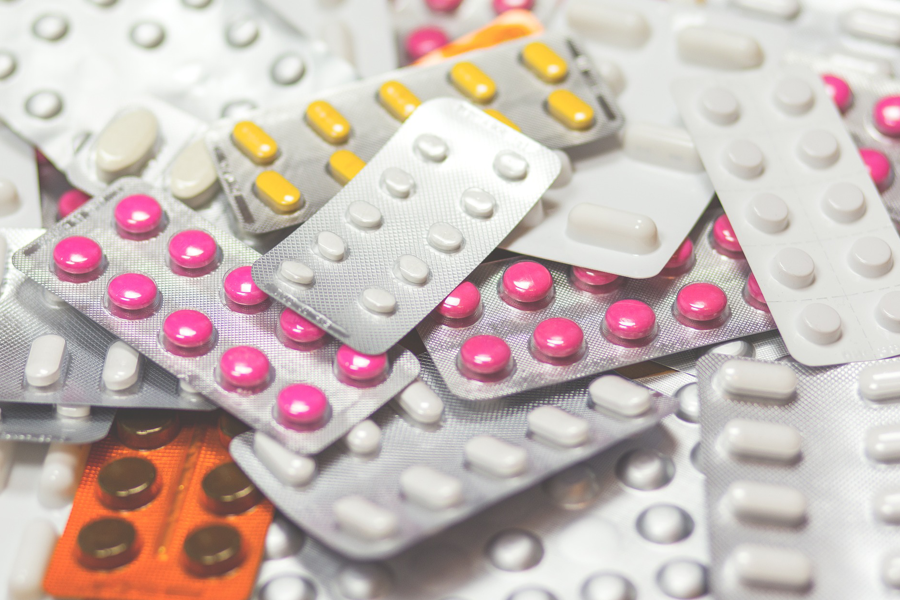
- Bottles: Another well-liked option for tablet packaging is bottles, which can be either made of plastic or glass. They offer convenient access and plenty of storage, making them especially suited for prescriptions that are used often. Many bottles include child-resistant lids to stop children from unintentionally swallowing them, making them a secure alternative for families with kids.
- Strip packs: Strip packs are identical to blister packs; however, they are more flexible and smaller. Aluminium or plastic strips are used to encapsulate tablets, making them convenient for short-term or travel use. The strip packs offer a practical way to transport and deliver tablets while maintaining the quality of each individual tablet.
- Alu-Alu packs: Alu-Alu packs are used for some pharmaceuticals that need special care since they are delicate. These packs are made of many layers of aluminium and plastic, creating a strong barrier against sunlight, moisture, and air. Alu-Alu packaging maintains the tablet’s stability and lifespan, making it the best choice for medicines that are susceptible to environmental conditions.
How are tablets are stored?
After being precisely packaged into blister packs, sticks, or bottles, tablets are kept in bigger containers or cartons for the distribution. Even when the tablets are appropriately sealed, precautions must be taken to preserve their effectiveness until they are received by the consumer. The following procedures should be performed to guarantee their reliability and efficiency:
- Store in Ideal conditions: Tablets must be stored in a cool, dry area since temperature and moisture can have a considerable influence on their chemical composition and lifespan. Extreme temperatures should be avoided since they can cause the active components to degrade or deteriorate in some other way. Tablets should also be shielded from direct sunlight since UV rays has the ability to speed up the deterioration process. Tablets’ potency and quality are preserved when stored in a monitored surrounding.
- Original packaging: When feasible, keep tablets in their original packaging. Pharmaceutical businesses create their packaging to offer the best conditions for maintaining the efficacy of the medication. The original, sealed packaging helps in insulating tablets from being exposed to the atmosphere, moisture, and other external factors that can influence its efficacy. It also acts as a barrier against any contamination while being handled and transported.
- Use child – resistant packaging: Child-resistant packaging helps reduce the danger of intoxication by preventing children’s unintentional consumption of bottles and blister packs. Child-resistant packaging guarantees that the medicine is available to adults while also protecting it against unauthorised access by children.
- Follow expiration Dates: Tablets must not be utilised after their expiration dates, as the safety and effectiveness of the tablet cannot be assured after that time. Expired tablets may have decomposed or undergone chemical transformations, making them less effective or even hazardous. It is critical to dispose of outdated tablets safely in order to keep people safe and medications effective.

To conclude, appropriate storage and packaging are required to ensure the efficacy and quality of tablets. Tablets should be kept in cool, dry locations away from sunlight and moisture. They should be kept in their original, airtight packing. Adhering to the recommended storage procedures helps to guarantee that the tablet is safe and effective for the rest of its shelf life. These procedures must be followed in order to deliver to medicine that keeps its therapeutic efficacy and provides the desired health advantages.
What are common ingredients that are used in making tablets?
Tablets are made up of both active pharmaceutical ingredients (APIs) and excipients. Excipients are inert components that aid in the tablet’s formulation, whereas APIs are the active ingredients accountable for the medication’s effectiveness. The common types of excipients are Bulking agents, Anti caking agents, colourants, lubricants etc.
Comparing tablets with other dosage formats.
Tablets, capsules, and powder mixtures are examples of common dose forms. Each of them possesses unique benefits and drawbacks. However, the following are some potential benefits and drawbacks of tablets:
Advantages of Tablet:
- Cost- effective: Manufacturing tablets is typically less expensive than manufacturing capsules. Their excipient availability and straightforward manufacturing technique help to make them affordable. Tablets are a popular choice because of this cost benefit, which often ends up in cheaper pharmaceutical costs for consumers.
- Prolonged shelf life: Compared to other dosage forms, tablets are praised for their stability and prolonged shelf life. Tablets that are maintained properly keep their shape and effectiveness for a long time, lowering the possibility of pharmaceutical waste.
- Higher dosage: Compared to capsules, tablets can hold a greater percentage of active pharmaceutical ingredients (APIs). Tablets are appropriate for treatments that require bigger dosages due to its dosing capacity, which offers patients sense of relief.
- Divisibility: Tablets have the ability to be readily cut into half or quarters without losing any of their structure or efficacy. This quality is especially helpful for changing dosages for paediatric or elderly patients or fine-tuning dosages to match specific patient demands.
- Chewable and Orally Dissolving Tablets: There are several tablet formulations that can be chewed or dissolved orally. These formulations are particularly beneficial for kids, the elderly, and others who have trouble swallowing. These methods’ convenience may increase patient acceptance.
- Extended release: Different release profiles can be achieved by customising tablet formulations. Some tablets have a quick release structure that allows for speedy medication absorption and activity. While lowering the frequency of dose, delayed-release or extended-release tablets guarantee a continuous and regulated medication release over a prolonged period of time.
Disadvantages of Tablet:
- May cause irritation: Tablets are more likely to irritate the gastrointestinal tract in some circumstances, particularly if they include specific excipients or have an uneven disintegration profile. The hardness or dissolving qualities of the tablet may cause pain or harmful effects in patients with sensitive stomachs.
- Uneven Absorption: Some tablets may not dissolve uniformly, which might cause changes in the way drugs are absorbed. Irregular disintegration might be an issue for tablets that require exact and precise dosage to maintain therapeutic effectiveness.
- Less Palatable: Despite the fact that many tablets have flavoured coatings or additives to enhance flavour and cover the bitterness of the drug, certain pills may still leave a bitter aftertaste when swallowed.
In conclusion, tablets and capsules and powder blends continue to be widely used dosage forms, each with specific benefits and disadvantages. Although tablets are often more affordable, long-lasting, and adaptable in terms of dosage, capsules could be preferred due to other benefits. To get the best therapeutic results, the choice between tablets and other forms should consider the medication’s particular characteristics, patient preferences, and any potential distribution issues.
Tips for swallowing a tablet
Large tablets in particular can be hard for many individuals to swallow. Tablets are stiff and rough, and some forms may be more challenging to consume. Also, there are some capsules that can be big, especially soft gels. However, there are several techniques that could help you take a tablet or capsule more easily. Here are some methods to test out:
- Take a large gulp of water before placing the tablet or capsule in the mouth and visualising yourself swallowing it. Then repeat the process while swallowing the tablet.
- Take the tablet by drinking from a bottle with a small aperture (opening).
- When you swallow, lean a bit forward.
- You may combine the tablet with semi liquid food like pudding or applesauce.
- Use a straw or cup made especially for consuming pills.
- Coat the tablet with an edible spray-on or gel lubricant.
Glentworth Formulations is here to suit your every need. Everything from Tablet, Capsule and Powder blends.
If you are wanting to know more information, please get in contact with us. Either using the contact form or contacting us directly on: [email protected].
